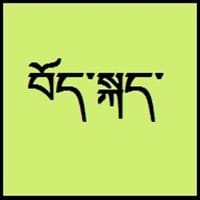Countries
India
China, Nepal
National Language
Bangladesh, India
Nepal, Tibet
Second Language
Not spoken in any of the countries
Not spoken in any of the countries
Speaking Continents
Asia
Asia
Minority Language
Bangladesh, Bhutan
China, India, Nepal
Regulated By
Asam Sahitya Sabha
Committee for the Standardisation of the Tibetan Language
Interesting Facts
- Assamese was reinstated as the state language of Assam in 1873.
- Assamese language has its own stream of origin, it is evolved in a different way from rest of the Indo-Aryan languages of India.
- Tibetan dialects vary alot, so it's difficult for tibetans to understand each other if they are not from same area.
- Tibetan is tonal with six tones in all: short low, long low, high falling, low falling, short high, long high.
Similar To
Bengali and Oriya
Not Available
Derived From
Sanskrit Language
Not Available
Alphabets in
Assamese-Alphabets.jpg#200
Tibetan-Alphabets.jpg#200
Scripts
Bengali
Tibetan alphabet, Tibetan Braille
Writing Direction
Left-To-Right, Horizontal
Left-To-Right, Horizontal
Time Taken to Learn
Not Available
Hello
nomoskaar
བཀྲ་ཤིས་བདེ་ལེགས། (tashi delek)
Thank You
ḍhonyobaaḍ
ཐུགས་རྗེ་ཆེ་། (tujay-chay)
How Are You?
aapuni kene aase?
ཁྱེད་རང་སྐུ་གཇུགས་བདེ་པོ་ཡིན་པས།
(kayrang kusu debo yimbay?)
Good Night
subhoraattri
གཟིམ་ལཇག་གནང་དགོས་། (sim-jah nahng-go)
Good Evening
subha gadhuli
དགོང་དྲོ་བདེ་ལེགས།
Good Afternoon
subha abeli
ཉིན་གུང་བདེ་ལེགས།
Good Morning
suprobhaat
སྔ་དྲོ་བདེ་ལེགས། (nga-to delek)
Please
anugroha kori
thu-je zig / ku-chee.
Sorry
moi ḍukkhita
ཀོང་དགས་། (gawn-da)
Bye
biḍai
ག་ལེར་ཕེབས་། (kha-leh phe)
I Love You
moi tomaak bhaalpaao
ང་ཁྱེད་རང་ལ་དགའ་པོ་ཡོད་ (nga kayrâng-la gawpo yö)
Excuse Me
kyoma koribo
དགོངས་དག བཟོད་དུ་གསོལ། ཐུགས་རྗེ་གཟིགས།
Dialect 1
Kamrupi
Central Tibetan
Where They Speak
Western Assam
China, India, Nepal
Dialect 2
Goalpariya
Khams Tibetan
Where They Speak
Western Assam
Bhutan, China
How Many People Speak
Not Available
Dialect 3
Bhakatiya
Amdo Tibetan
Where They Speak
Assam
China
How Many People Speak
Not Available
Speaking Population
Not Available
Native Name
অসমীয়া (asamīẏa)
བོད་སྐད་ (pö-gay)
Alternative Names
Asambe, Asami, Asamiya
Bhotia, Dbus, Dbusgtsang, Phoke, Tibetan, U, Wei, Weizang, Zang
French Name
assamais
tibétain
German Name
Assamesisch
Tibetisch
Pronunciation
Not Available
Not Available
Ethnicity
Assamese people
tibetan people
Origin
7th century A.D
c. 650
Language Family
Indo-European Family
Sino-Tibetan Family
Subgroup
Indo-Iranian
Tibeto-Burman
Branch
Indic
Not Available
Early Forms
Kamarupa
Old Tibetan, Classical Tibetan
Standard Forms
Assamese
Standard Tibetan
Language Position
Not Available
Signed Forms
Not Available
Tibetan Sign Language
Scope
Individual
Not Available
ISO 639 6
Not Available
Not Available
Glottocode
assa1263
tibe1272
Linguasphere
59-AAF-w
No data Available
Language Type
Living
Not Available
Language Linguistic Typology
Subject-Object-Verb
Not Available
Language Morphological Typology
Not Available
Not Available
All Assamese and Tibetan Dialects
Most languages have dialects where each dialect differ from other dialect with respect to grammar and vocabulary. Here you will get to know all Assamese and Tibetan dialects. Various dialects of Assamese and Tibetan language differ in their pronunciations and words. Dialects of Assamese are spoken in different Assamese Speaking Countries whereas Tibetan Dialects are spoken in different Tibetan speaking countries. Also the number of people speaking Assamese vs Tibetan Dialects varies from few thousands to many millions. Some of the Assamese dialects include: Kamrupi, Goalpariya. Tibetan dialects include: Central Tibetan , Khams Tibetan. Also learn about dialects in South American Languages and North American Languages.
Assamese and Tibetan Speaking population
Assamese and Tibetan speaking population is one of the factors based on which Assamese and Tibetan languages can be compared. The total count of Assamese and Tibetan Speaking population in percentage is also given. The percentage of people speaking Assamese language is 0.24 % whereas the percentage of people speaking Tibetan language is Not Available. When we compare the speaking population of any two languages we get to know which of two languages is more popular. Find more details about how many people speak Assamese and Tibetan on Assamese vs Tibetan where you will get native speakers, speaking population in percentage and native names.
Assamese and Tibetan Language Codes
Assamese and Tibetan language codes are used in those applications where using language names are tedious. Assamese and Tibetan Language Codes include all the international language codes, glottocodes and linguasphere.





